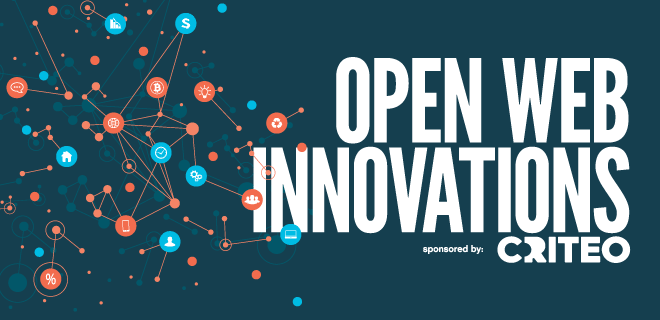
Now that third-party cookies are going to take a little longer to expire and Google’s FLoC Origin Trials have sent the tech giant back to the drawing board, a lot of publishers are thinking they can start resting on their laurels.
That would be a big mistake.
There’s actually no time like the present for all of the cookieless alternatives to start stepping up to the plate and showing what they’re really made of, and for pubs to get to testing right away.
Single Sign-On solutions are one such open web tool that’s gaining massive ad tech support. But one of the major barriers to any of these solutions reaching scale is consumer consent fatigue.
In that vein, Criteo, Prebid, and other industry leaders have set out to help solve this issue through Prebid’s Project Management Committee (PMC) which is responsible for establishing, prioritizing, and building industry roadmap items.
The goal of this PMC is to align with industry leaders and create an open-source and interoperable single sign-on (SSO) solution, helping to reduce the friction between consumers and publishers in the cookieless future, while supporting logged-in and logged out scenarios.
We spoke with Jordan Cauley, Director of Product at Mediavine, who co-chairs the SSO PMC (alongside Criteo Chief Product Officer, Todd Parsons) within Prebid about opportunities for pubs over the next year and a half and why Prebid is central to the open web’s future.
Lynne d Johnson: Mediavine has O&O sites and also helps thousands of publishers successfully monetize their sites as well. What opportunities are you seeing for publishers over the next 18 months and what do you think some of their biggest challenges will be?
Jordan Cauley: The next 18 months are going to be crucial for publishers. First, the great news: Demand has rebounded from lows during the pandemic and programmatic ad prices are surpassing pre-pandemic comparisons.
Also on the opportunistic side, we’re seeing advertisers begin to trust video from the Open Exchange almost as much as they’ve historically trusted deal IDs. Outstream video is becoming as trusted as instream. Mediavine is continuing to prioritize innovation of video products, which is why we’ve built our own instream and outstream video players. The SSO committee is working to build an open solution that will enable buyers to have enough scale to purchase open video inventory and empower publishers to tap into that demand through a more direct and consolidated way.
The biggest challenges publishers can expect over the next 18 months are the same, in my opinion, as the whole advertising ecosystem: addressability, frequency capping, and attribution. With the deprecation of the third-party cookie, we must provide alternatives to help publishers and advertisers better understand and serve their audiences. Solutions like contextual and first-party data will be key to addressing audiences accurately.
LdJ: Speaking of identity, you co-chair the Single Sign-On PMC within Prebid where stakeholders from all across the advertising ecosystem are working to bring an open-source SSO technology to market. Can you share why you see Prebid.Org as a valuable community and why you wanted to invest in taking a leadership role?
JC: The ad tech ecosystem contains unique stakeholders and pressures, so it’s important that ad tech companies at every corner of the market work cohesively through the complexities that come with the territory. A group like Prebid has a low barrier to entry and allows for vital industry collaboration.
My goal for joining the SSO committee was to share the knowledge gained from Mediavine’s unique position in the industry. Because Mediavine operates across eight thousand domains, we have a valuable perspective of the problems facing the industry and are motivated to offer a seamless SSO solution to publishers.
More than two years ago we began developing our own SSO/proprietary toolkit, Grow.me, to help address the evolving industry landscape. In turn, I can use the feedback from our internal efforts to help guide the Prebid SSO project into a product supported by large and small publishers, owned-and-operated publishers, and publishers who have an outside company managing their identity solutions.
LdJ: As a global leader of Prebid.org you’re starting to test this new SSO, what are the greatest challenges you expect the SSO working group to solve?
JC: I think the greatest challenge the committee is helping address is to encourage collaboration. Traditionally, advertisers, DSPs, SSPs, publishers, and other players in the ecosystem have operated relatively independently.
There’s a push toward vertical integration in this evolutionary time for the web. Groups like the SSO Committee and Prebid as a whole have to bring the disconnected parts of the ecosystem closer together and view the space more holistically.
The end solution aims to bring the entire ecosystem together to deliver better relationships between users, publishers, and advertisers with opt-in-based experiences for both content and advertising.
LdJ: There’s been a lot of interest developing around both authenticated and unauthenticated traffic for publishers. But initially, it seemed, the industry was primarily focused on authenticated traffic, where the user shared their email directly with the publisher. What are the key differences between the two experiences for users and their use cases?
JC: Authenticated traffic is traffic that the publisher has been able to verify by a reader logging into their site. A reader understands they have provided their email address and then verifies that email address in exchange for access to an exclusive feature or service. The partially anonymous ID or unauthenticated traffic asks less of readers and users.
In this case, readers accept an agreement that doesn’t require them to supply their full email address or another piece of personally identifiable information (PII). Instead, it provides a cross-domain common identifier that can be used for many of the same cases as a third-party cookie, but with clearer controls in the hands of the users.
A user with a semi-anonymous ID can manage some preferences for privacy, can be frequency capped as needed, or even retargeted in some cases. This creates opportunities to build trust in the relationship with a publisher, an advertiser, and ultimately with the proposed entity that is managing an SSO.
I believe the key is developing both options together and in doing so, creating a “good, better, best” mentality. “Good” being contextual signals, “better” being semi-anonymous traffic and “best” being fully authenticated traffic stemming from relationships with the users. This mentality can improve efficiency for advertisers and revenue for publishers without being dogmatic about an all-in strategy that is being actively combated by browser vendors and a public concerned with privacy on the web.
LdJ: And do you see a flow between authenticated and unauthenticated traffic? How will it work?
JC: I think the flow between fully authenticated and semi-anonymous traffic is going to depend very much on publishers and in many ways, advertisers. The committee is still working through the options on the table, but if a semi-anonymous ID user develops the trust to elevate to a fully authenticated relationship? There is a great deal of value in this flow, potentially improving things for all parties.
